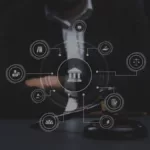Excerpt from Malwarebytes Article, Published on Oct 8, 2024.
MoneyGram, a leading money transfer service, has alerted its customers about a significant data breach that compromised personal information for some users between September 20 and 22, 2024. The incident, discovered on September 27, is currently under investigation, with the exact number of affected customers yet to be determined.
Preliminary findings suggest that the stolen information varies among individuals but may include names, contact details such as phone numbers, email addresses, and physical addresses, as well as dates of birth and Social Security Numbers. Additionally, government-issued identification documents, including driver’s licenses and other forms of identification like utility bills, were potentially exposed. Bank account numbers, MoneyGram Plus Rewards numbers, transaction details—such as dates and amounts—and information related to criminal investigations, particularly fraud, may also have been affected.
While the breach may have exposed some Social Security numbers and criminal investigation data, MoneyGram emphasizes that only a limited number of these were taken. In response to the breach, the company temporarily took certain systems offline to prevent further security threats, leaving numerous customers anxious about sending funds internationally. The disruption also impacted partnerships with organizations such as the Bank of Jamaica and the UK’s Post Office. The UK’s Information Commissioner’s Office (ICO) has confirmed it received a report from MoneyGram regarding the incident.
To mitigate risks, MoneyGram advises customers to remain vigilant against potential fraud and identity theft. The company has arranged complimentary identity protection and credit monitoring services for affected U.S. customers for two years, ensuring they can effectively monitor their financial security. In light of this data breach, affected customers are urged to take immediate protective measures, including changing passwords and enabling two-factor authentication.
To delve deeper into this topic, please read the full article on Malwarebytes.





